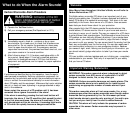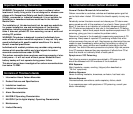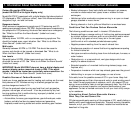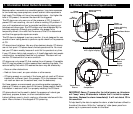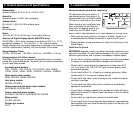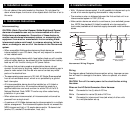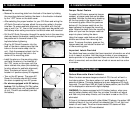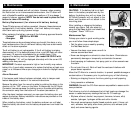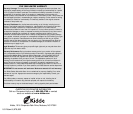
Important Warning Statements
WARNING: This product is intended for use in ordinary indoor
locations of family living units. It is not designed to measure com-
pliance with Occupational Safety and Health Administration
(OSHA), commercial or industrial standards. It is not suitable for
installation in hazardous locations as defined in the National
Electric Code.
The installation of this device should not be used as a substitute
for proper installation, use and maintenance of fuel burning
appliances, including appropriate ventilation and exhaust sys-
tems. It does not prevent CO from occurring, nor can it solve and
existing CO problem.
WARNING: This device is designed to protect individuals from
acute effects of carbon monoxide exposure. It may not fully safe-
guard individuals with specific medical conditions. If in doubt,
consult a medical practitioner.
Individuals with medical problems may consider using warning
devices which provide audible and visual signals for carbon
monoxide concentrations under 30 PPM.
This carbon monoxide alarm requires a continuous supply of elec-
trical power – it will not work without power. Models without
battery backup will not operate during power failure.
This alarm has not been investigated for carbon monoxide detec-
tion below 70 PPM.
Contents of This User’s Guide
1. Information About Carbon Monoxide
2. Product Features and Specifications
3. Installation Locations
4. Installation Instructions
5. Alarm Characteristics
6. KN-COB-IC Operating Characteristics
7. KN-COP-IC (with digital display) Operating Characteristics
8. Maintenance
9. Limited Warranty
1. Information About Carbon Monoxide
General Carbon Monoxide Information
Carbon monoxide is a colorless, odorless and tasteless poison gas that
can be fatal when inhaled. CO inhibits the blood’s capacity to carry oxy-
gen.
Periodically review this alarm manual and discuss your CO alarm emer-
gency procedure with all the members of your family. Never ignore a CO
alarm. A true alarm is an indication of potentially dangerous levels of
CO. CO alarms are designed to alert you to the presence of CO before
an emergency – before most people would experience symptoms of CO
poisoning, giving you time to resolve the problem calmly.
Determine if anyone in the household is experiencing symptoms of CO
poisoning. Many cases of reported CO poisoning indicate that while
victims are aware they are not well, they become so disoriented they are
unable to save themselves by either exiting the building or calling for
assistance. Also, young children and household pets may be the first
affected. You should take extra precautions to protect high-risk persons
from CO exposure because they may experience ill effects from CO at
levels that would not ordinarily affect a healthy adult.
Symptoms of CO Poisoning
The following common symptoms are related to CO poisoning and
should be discussed with ALL members of the household.
Mild Exposure:
Slight headache, nausea, vomiting, fatigue (often described as
“flu-like” symptoms).
Medium Exposure:
Severe throbbing headache, drowsiness, confusion, fast heart rate.
Extreme Exposure:
Unconsciousness, convulsions, cardio-respiratory failure, death.
If you experience even mild symptoms of CO poisoning, consult your
doctor immediately!




